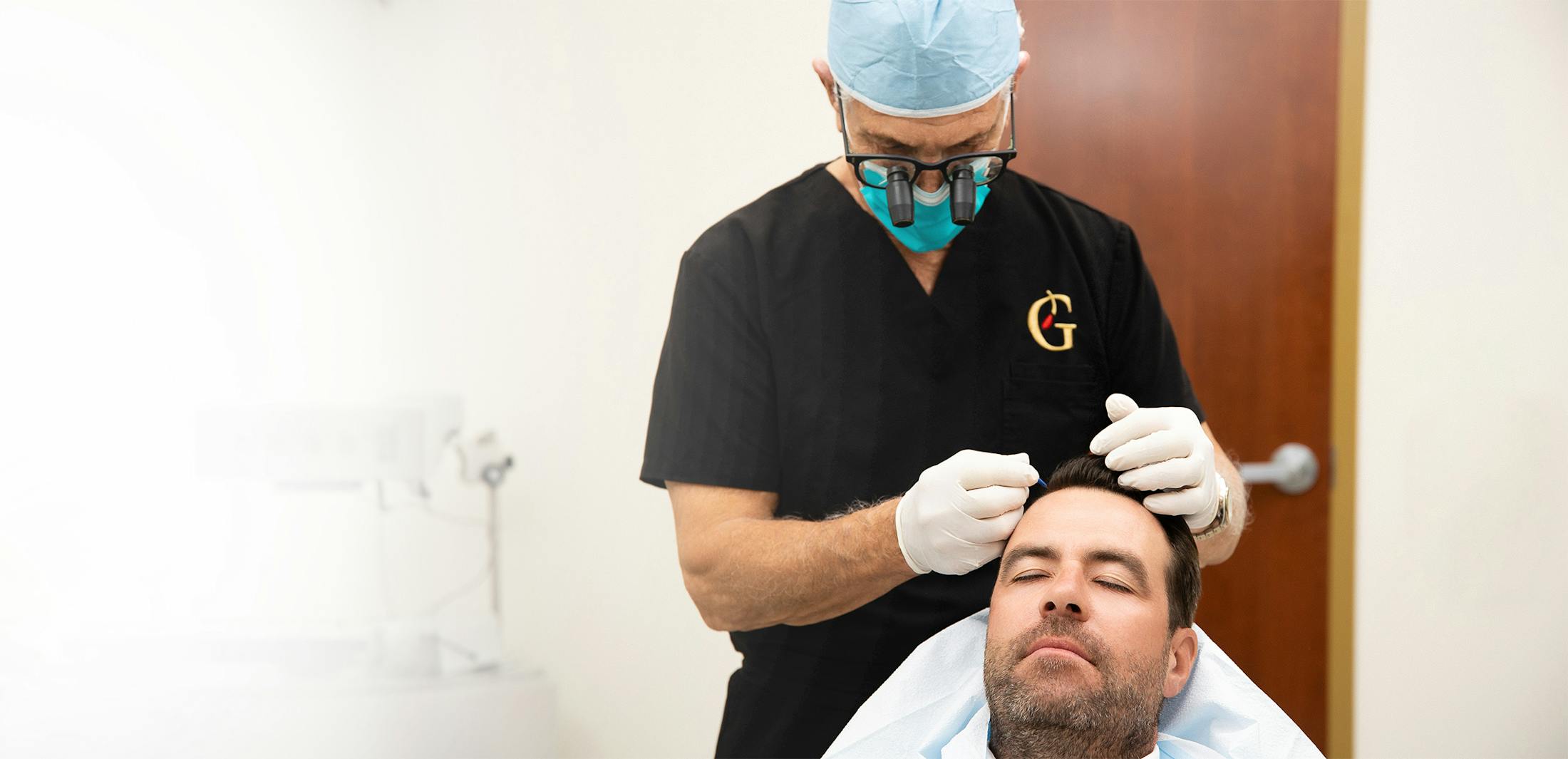What is the difference between FUT and FUE?
FUT (Follicular Unit Transplantation) and FUE (Follicular Unit Extraction) differ in how the hair is harvested or taken from the donor area of the scalp during a transplant. FUT involves removing a strip of hair-bearing scalp from the donor area in the back of the scalp, and microscopically dissecting it into individual follicular units for transplantation. The donor site is immediately closed with sutures leaving a minimally perceptible linear scar which is covered by the existing hair. FUE involves the meticulous removal of individual hair follicles in naturally existing bundles of one to four, or more hair follicles. The follicular bundes are harvested evenly throughout the donor area leaving microscopic channels that heal rapidly and naturally in a matter of days. Recipient site planning of the areas to receive the graft placement remain the same regardless of the method.
Why are FUE and FUT procedures Bio-Enhanced at Greco Hair Restoration?
Both FUE and FUT procedures are bio-enhanced with our proprietary Cytokine Rich Plasma (CRP) in order to maximize graft survival, optimize wound healing, speed up the re-growth of transplanted hairs, and boost the growth of existing non-transplanted hairs. The donor site, recipient site, and non-transplanted regions of the scalp are enriched CRP and/or adipose derived stem cells. Additionally we create a growth factor rich holding solution for the grafts while they are meticulously examined before being gently placed into the desired regions of the scalp or brows.
When will my new hair grow after surgery?
After donor grafts are dissected and placed in the recipient site, the newly grafted follicles go into the resting phase and remain dormant for a period until they begin to grow again. The use of our proprietary CRP during all phases of the surgical procedure greatly minimizes the shock to the hair follicle, increasing graft survival and allowing new re-growth to occur as early as several weeks post transplant. Hair growth varies from one-quarter to one-half inch per month. As hair grows in length, it also grows in diameter. The results are gradual and very natural. Full aesthetic maturity may not be achieved until 14-16 months or more post-transplant.
Will I lose any existing hair after the transplant?
Regardless of what type of procedure, there is a post transplant shock that may affect a small amount of the existing hair in the recipient site. This shocked hair simply goes into the telogen (resting cycle) for two to three months before resuming normal growth patterns. Our bio-enhanced techniques are designed to minimize this temporary side effect from occurring.
Will the transplanted hair eventually fall out?
Hair transplants that are properly performed should result in permanent growth of the transplanted hairs. Hair restoration is a significant commitment that requires patience and realistic expectations. We ask that you commit to additional methods of maintining all existing hair such as medical or non-surgical therapies designed to optimize growth and maintenance of all hairs, transplanted and non-transplanted.
What type of post-operative care do I need?
We place great emphasis on the post-operative period at Greco Hair Restoration. We provide a post-operative kit that contains everything you need to take care of your surgical site in the post-operative period and beyond. We strongly encourage all transplant patients, if possible, to visit our office on a daily basis for up to 10 days post-transplant to take advantage of our in-office based Photobiomodulation, or Red Light Therapy as well as our Oxygen Amplified Therapy in order to accelerate wound healing, maximize graft survival and minimize post-operative discomfort and downtime.
What do I need to do before and after hair transplant surgery?
Please explore the Patient Care Instructions under the Resources section of our website for downloadable instructions on the preparation for hair transplant surgery as well as all post-operative material on how to take care of the surgical sites and the do’s and don’ts of the post-operative period.
Can I exercise after a hair transplant?
We recommend minimizing exercise and all strenuous activity during the first 10 days post-operatively in order to optimize the wound healing conditions and minimize post-operative complications.
What makes the surgeons at Greco Hair Restoration unique?
Dr. Joseph Greco, Jr and Dr. Joseph Greco, III are part of a 3 generation family in hair restoration. Together their aesthetic touch, technique, and artistic design principles have been refined over decades of experience and over 40,000 procedures performed in Hair Restoration and Dermatologic Surgery. They have written book chapters, journal articles and have lectured across the country and world on topics such as hair restoration, surgical anatomy, reconstructive technique, and the overall approach to the aesthetic patient. Most importantly, they bring a personalized approach to patient care. You will be sure to meet directly with one of them for all consultations in order to develop your personalized treatment plan.
